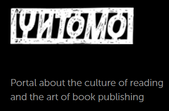Prose Poems of Tagore by Dr. Bina Biswas
Tagore and the Vaishnava poetry
In Bengali, two of Rabindranath’s most famous achievements are the poem on Shahjahan of which truncated version appears in “Lover’s Gift – I,” and another the poem translated in “Lover’s Gift – 42”. These poems have two things in common; they relate to works of art, and both of them are philosophical lyrics in which the poet considers the connection between love and life. Emperor Shahjahan built the Taj Mahal as memorial to his dead wife. By a striking flight of fancy the poet imagines that the emperor wanted to cheat Death which destroys and Time which effaces and that he must have realized that the best way to give permanence to love would be through the enchanting medium of art. Time makes one forget, but art fills the void and attaches permanence. Love finds a wonderful ally in art which enables it to triumph over death, but this triumph is illusory, for life goes on its ceaseless voyage and cannot therefore, linger over what has had its day; it has a call to meet the endless and passes on leaving its burden to be nursed by art. Tagore cries out in the poem Shahjahan:
However far I may gaze, I see no trace of the traveller who was here. His beloved could not hold him back, his empire made way for him, neither sea nor mountains could impede his progress. The night called out to him and the stars of the heaven sang to him. His chariot sweeps along towards the portals of a new dawn. It is I who am left behind,
borne down by the memory’s burden while he, the unfettered one, is here no more![1]
(Shahjahan/ “Shejehan”)
The translation of the poem Chumban/“Kisses” goes as follows:
Leaving their homes, two loves have made a pilgrimage to the confluence of lips. In the law of Love two waves have swelled, breaking and mingling on two lips.[2] (Chumban/“Kisses” translation mine)
The idea of confluence is more open and sensual in the original Bengali, than in English, because in India, pilgrims journey to the confluence of great rivers, such as Allahabad; and the word for confluence also means sexual intercourse. And here in the opening lines of Bibashana/“Her Nakedness”, the influence of the 17th century poet John Donne’s metaphysics is clearly visible and the starting of the poem is sudden and stark:
Throw off your robe, Love – discard it all. Wear only the raiment of your naked beauty
like a heavenly nymph robed in light. (Bibashana/“Her Nakedness”)
The above poem perhaps has a glaring resemblance can be traced with the opening lines of “The Sun Rising”:
Busy old fool, unruly sun,
Why dost thou thus,
Through the windows, and through
Curtains call on us? (“The Sun Rising”)
Or with Tagore’s poem Alingan/“The Caress”:
…would like to call you in some
other way,
in a form of caress, in more simple
words, by a name universal in
manner and meaning
…my love. (Alingan/“The Caress”)
The poet’s metrical harshness, his obscurities of method, his bewildering allusiveness, his ardent imagination, his taste for the Vaishnava poetry and his unexpected divergence into sweet and delightful music, all these things may remind the modern reader of the metaphysical poets. He has wit like that of John Donne and excessive voluptuousness in the diction also attributes to the metaphysics.
One of the most interesting things about Tagore is his emphatic likeness to the Chandidas and Vidyapati in the smooth sweetness of the Vaishnava verse; and although he had the power to utter dulcet and harmonious sounds, he seems to have knowingly adopted a straightforward and a staccato method in order to stick to the Vaishnava tradition. But his great originality precluded any pronounced literary formative influences; but of the two forces that influenced Bengali literary methods those times that influenced almost all the writers were the Vaishnava poetry and the imitations of the English poetry. His work was pretty widely circulated in literary circles, and exercised a great and not very happy influence; for imitators found it far easier to assume his austerity and obscurity, than to display the thought and imagination that render these things tolerable. Bankimchandra Chatterjee, who admired him uncritically, predicted a great future for the budding poet, also left channels open to criticise him for not being understood. Vaishnavite critics of Tagore often complain that his poetry has not the intense vitality that distinguishes the work of his Vaishnava predecessors. The significance of Tagore’s poetry is larger and more complex, and that the intensity of passion to be found here is intensity of different kind. He does not analyse and decorate Radha’s passion in the same way as does either Chandidas or Vidyapati, for the simple reason that the divine shepherd has for him a more transcendent significance than for the Vaishnava poets, and he looks upon yearning passion as only a part of the rhythm of life. The wider and more mystical appeal of Tagore may be understood if the reader considers a simple poem like “I was walking, by the road, I know not why?” “The Gardener-14”* in which Vaishnava imagery comes only incidentally, says the poet:
Years ago it was a day of breezy March when the hum of the spring was languorous, and mango blossoms were falling on the dust.
The rippling water leapt and licked the brass vessel of the landing-step. I think that day of breezy March, I do not know why. (“The Gardener-14”)
speaker, which has communicated itself to nature and is faintly
*English Rendering by Rabindranath Tagore
reminiscent of Radha’s passion. It has intensity of its own; but this
intensity is different from the fervour with which the love of Krishna and Radha is portrayed in Vaishnava literature. The portraiture of passion by the Vaishnava poet is simpler and more poignant but Tagore’s poetry of love is more suggestive and more intricate. One of the best examples of the complex appeal of Tagore’s poetry is found in those poems in which there is a combination of Shaiva and Vaishnava imagery. Vaishnava poetry is remarkable for its sweetness, but for Tagore the infinite is not only sweet but also terrible; the thunderstone is painted, in the heart of lotus in the banner of Raja/ The King of the Dark Chamber. Such a mixture of tenderness and sternness is inherent in those images in which he invokes Shiva, the ascetic God, imagining him as a shepherd or cowherd as the Vaishnavas imagine Krishna; being Mahakala or Eternity, this ascetic shepherd tends the flock of days constituting time. This mingling of Shaivism and Vaishnavism becomes clearer in the poem of his in which the two Gods are invoked side by side is a poem in Utsarga/“Offering” in which the divine lover is apostrophised in different grabs, first as a young flute-player and then as a grim ascetic with an iron rod in his hand and with water dripping from his hair (incarnate of Lord Shiva).
It is in the midst of a storm at night that the poet invokes Shiva, the “tremendous lover”, but a tryst in darkness and rain occurs more frequently in Vaishnava poetry than in Shaiva legend and literature. The rainy season is a recurrent theme with Tagore who, taking a hint from Kalidasa’s Meghdoot, endows it with a new significance. During the rains in Asadh (July) people cannot stir out of their homes. But it is on such days and such nights that a man feels lonely and longs to go out and meet the beloved, and in Vaishnava poetry there are frequent references to Radha making nothing of danger and going out under the shelter of darkness to have stolen interviews with Krishna. This loneliness and this desire for union Tagore looks upon as characteristics of universal life, human and terrestrial, and the errant clouds of the rainy season appear to him to be charged with message of the unknown which makes the heart wistful. The pang of separation which the stars feel as they gaze at one another becomes music among the rustling leaves in the rainy darkness of Asadh. In the busy moments of noontide work the poet is with the crowd, but on dark lonely days when clouds heap upon clouds it is only for the far-away lover that his soul pines in pensive loneliness for the beloved.
[1] Humayun Kabir (ed.): Poems of Rabindranath Tagore (Calcutta, UBSPD, 2005), p.138
[2] Rabindranath Tagore (ed.): Sanchaita, (Calcutta: Viswa Bharati, 1931), p.46




